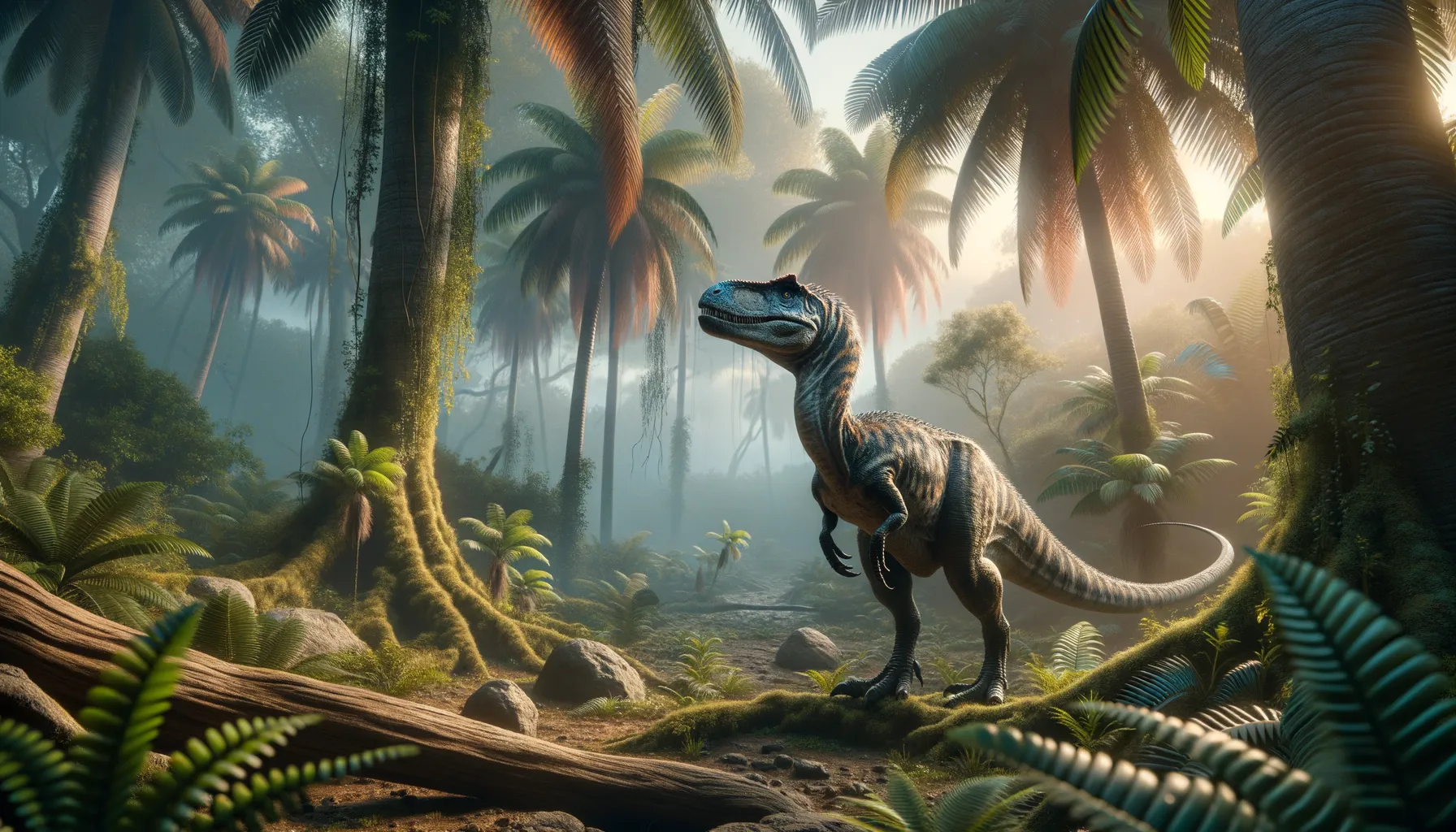
Jubbulpuria
Swift and nimble, nature's little survivor.
Period
Cretaceous
Length
Estimated to be around 2.5 meters long.
Height
Theropod reaching approximately 1 meter tall at the hips.
Weight
Estimations suggest around 40 pounds.
Jubbulpuria was a small theropod dinosaur from the Cretaceous period, discovered in the region now known as India. While not as large or as famous as some of its contemporaries, this nimble carnivore likely played a crucial role in its ecosystem, acting as both predator and prey. Its discovery has helped paleontologists understand the diversity of life that thrived in prehistoric India.
Diet
Jubbulpuria was primarily carnivorous, feeding likely on smaller vertebrates and possibly insects. Its small size and agility would have been advantageous for catching fast or elusive prey.
Hunting
Jubbulpuria probably hunted alone or in pairs, using its agility to surprise or outmaneuver prey. Its small stature suggests it was a quick hunter, adept at capturing small, fast-moving animals.
Environmental challenges
Living during a time of significant geological changes, Jubbulpuria faced environmental challenges such as volcanic activity and climate fluctuations. These factors could have influenced food availability, prompting it to adapt its hunting strategies. Additionally, competition with other predators might have been a constant challenge, requiring strategic thinking for survival.
Speed
Likely agile for its size, useful for evading predators.
Lifespan
Lifespan is uncertain but possibly around 10 to 20 years.
First discovery
Discovered in India during the 20th century.
Fun Facts
- Jubbulpuria was a small dinosaur from the Late Cretaceous period, which makes it over 70 million years old!
- Despite its tiny size, likely less than 2 meters long, Jubbulpuria was a fierce predator.
- The name Jubbulpuria comes from the place where its fossils were found, near Jabalpur in India.
- Jubbulpuria belongs to a group of theropod dinosaurs, which are the same group that includes the famous T-Rex and even modern birds.
- Fossils of Jubbulpuria are quite rare, making it a mysterious creature that scientists are still trying to learn more about.
- It probably had a long, slender body and a swift frame, perfect for fast hunting!
- Jubbulpuria lived during the same era as the last generation of dinosaurs before their mass extinction.
Growth and Development
Jubbulpuria likely experienced rapid growth, common among small theropods to reach maturity quickly. This rapid development was probably driven by the need to avoid predation, with juvenile dinosaurs needing to grow fast to escape predators. Once mature, maintaining agility would have been crucial for both hunting and defense.
Habitat
Its habitat likely consisted of lush forests and open plains in prehistoric India, providing a diverse range of prey. The area's warm climate supported a rich variety of life, giving Jubbulpuria access to different food sources. As a result, its natural environment would have been dynamic and competitive.
Interaction with other species
Jubbulpuria shared its habitat with other dinosaurs, creating a complex web of predator-prey relationships. It likely competed for food with other small theropods, occasionally coming into conflict with larger predators. Cooperation or competition for resources would have influenced its social dynamics and survival strategies.
Natural lifespan
Its natural lifespan is believed to have ranged from 10 to 20 years.
Reproduction
Like many theropods, Jubbulpuria likely laid eggs, with hard shells that protected them from environmental elements. Parental care might have varied, with some level of protection or nurturing provided by adults to ensure offspring survival.
Social behaviour
While specific social behaviors are not well-documented, Jubbulpuria might have been a solitary or minimally social creature. Its small size and hunting style suggest that large social groups were unlikely, though pairs or small family units may have existed.
Fossil locations
Fossils of Jubbulpuria have primarily been found in the Jabalpur region of India. These discoveries provide valuable insights into the diversity and distribution of theropod dinosaurs in the Indian subcontinent during the Cretaceous period.
